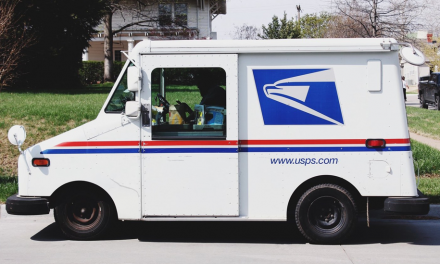
USPS to run continuous checks on mail plant numbers
US Postal Service managers and executives have promised a “continuous process” from now on to ensure its processing network is the right size to handle the mail volumes that flow through it. Speaking at the National Postal Forum, which concluded in San Diego on Wednesday, USPS executives and managers discussed a new “top-down” integrated network analysis and consolidation system that has improved the process of slimming down the USPS infrastructure in the last six months.
Mail volumes have now declined to 1993 levels, but in the intervening years the US Postal Service built up its processing infrastructure considerably while it was “struggling” with growing volumes.
Although in the last few quarters volumes have stabilised to some degree to around 170bn pieces a year, volumes have sunk 20% in the last decade, and taking into account technological improvements that have boosted processing efficiencies, the Postal Service has been left with a “considerable” excess capacity in its network.
This means unnecessary costs, helping the USPS to post an $8.5bn loss last year and for USPS customers has contributed to postal rate increases.
USPS vice president of network operations Dave Williams said there had been 67 Area Mail Processing facility consolidations since 2007, including 35 facility consolidations last year.
From a base of 538 facilities in 2010, 60 complete sectional center facility consolidations are approved or currently under study, he said.
“We pulled out $3bn in costs in last year, $9bn in the last three years,” he said. “But the tremendous amount of excess space translates into a lot of additional operational costs.”
“Top-down”
Increasingly, the Postal Service is now using a top-down approach to pinpoint inefficiencies in the network, rather than relying on district managers to come forward and suggest a facility that could be subject to a two-month feasibility study.
In the same way that the Postal Service has been using computer software to optimise its delivery routes to cut fuel costs and improve efficiency, the USPS network consolidation process now makes use of computer modelling to analyse the processing infrastructure, both at a network level and within individual plant workspace floor plans.
Luke Grossmann, the USPS manager for network development and support, said the process would now take the form of an annual review of network efficiency.
He said: “As we get a stable volume, we will probably get to a stage where we have the right facilities, but technically every facility is a candidate for consolidation.”
USPS customers have generally supported the efficiency benefits that come with “right-sizing” the Postal Service processing network.
There have been problems in the consolidation process, with reports of labeling problems and redirect mix-ups, with trucks arriving at USPS facilities to drop off mail only to find no facility capable of taking their mail. But the mailing industry recognises the need for the USPS network to reflect the 43bn loss in mail pieces now in the mailstream.
Joe Schick, the director of postal affairs at Quad Graphics, the largest privately-held printer in the US, which prints magazines including Newsweek, Time and People, said the integrated consolidation programme was “exactly what the industry wants the Postal Service to do”.
He said: “There will be rough spots along the way, but this leads to tons of efficiency – not just in transport, but in movements within our plants, too.”
Schick explained that larger, consolidated processing facilities meant his trucks could stop at a single plant, rather than many, allowing larger pallets that improves automation at his company’s printing facilities.
The Quad Graphics director also applauded the improvements seen in the consolidation programme in recent months.
“In the last few months, they have not impacted us nearly as much as they did six months ago,” he said.
Labour reduction
Elsewhere in the USPS postal network, major cost-cutting efforts to help rebalance the books are expected to see as many as 2,000 post offices closed, with postal services transferred to alternative access points.
Overall staff numbers are set to move from the current 535,000 closer to 400,000 in the long-term – even after a reduction of 130,000 in the last few years, as US Postmaster General Pat Donahoe seeks to slim down the Postal Service outgoings from an annual $73bn to a $60bn level.
This has started with 2,000 administrative or supervisory staff accepting a $20,000 offer to leave this year, as part of plans to cut that level of staff by 7,500 this year. Expected attrition this year should see staffing levels fall by 30,000 in 2011, according to USPS officials.
Speaking to reporters this week, Postmaster General said new flexibilities in labour agreements were needed, such as through the American Postal Workers Union deal currently being voted on by union members.
“I think we’ve got a good formula with the APWU agreement,” Donahoe said. “The bottom line is we have got to improve our flexibility and reduce labour costs – and they know that.”












